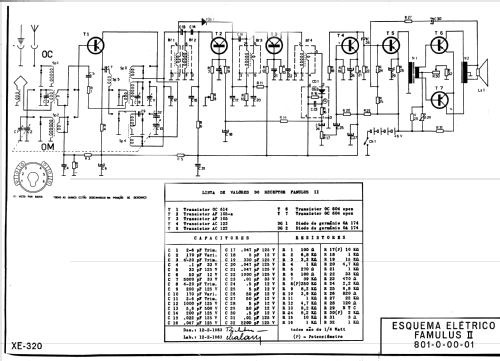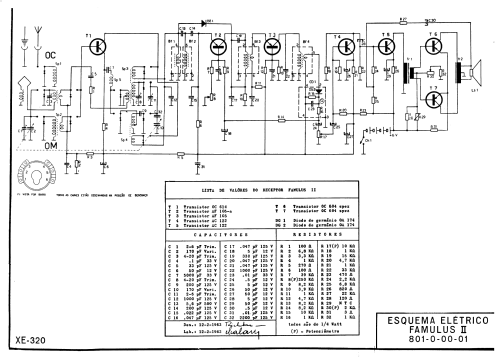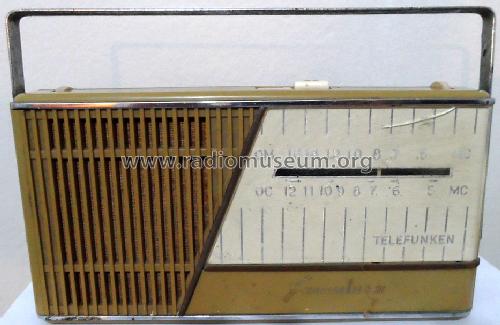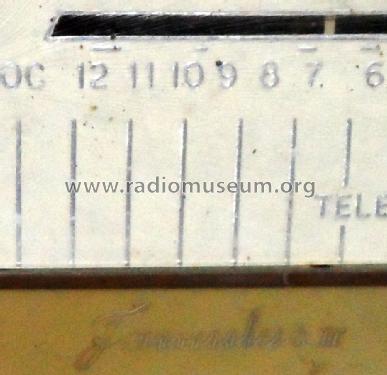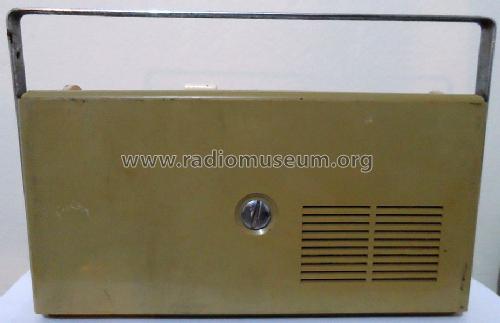- Country
- Brazil
- Manufacturer / Brand
- Telefunken do Brasil S.A.; Rio de Janeiro, São Paulo
- Year
- 1962/1963

- Category
- Broadcast Receiver - or past WW2 Tuner
- Radiomuseum.org ID
- 227350
Click on the schematic thumbnail to request the schematic as a free document.
- Number of Transistors
- 7
- Main principle
- Superheterodyne (common); ZF/IF 460 kHz; 3 AF stage(s)
- Tuned circuits
- 6 AM circuit(s)
- Wave bands
- Broadcast and Short Wave (SW).
- Power type and voltage
- Dry Batteries / 4 × 1,5 Volt
- Loudspeaker
- Permanent Magnet Dynamic (PDyn) Loudspeaker (moving coil) / Ø 9 cm = 3.5 inch
- Power out
- 0.3 W (unknown quality)
- Material
- Plastics (no bakelite or catalin)
- from Radiomuseum.org
- Model: Famulus II - Telefunken do Brasil S.A.; Rio
- Shape
- Portable set > 8 inch (also usable without mains)
- Dimensions (WHD)
- 240 x 120 x 50 mm / 9.4 x 4.7 x 2 inch
- Notes
-
The original schematic of this Telefunken model Famulus II is from February 12, 1963 and this original semiconductor set up is shown. Telefunken made a Famulus 3971 in Germany from 1958 to 1961, but with the following semiconductors: OC613 OC612 OC612 OC602 OC604 OC604spez OC604spez OA174 OA174. We can imagine that the moulds and machinery was then shipped to Brazil to produce much cheaper for Brazil and probably also for Export from Brazil, by changing the electric part only because at that time it was easy to include short waves instead of long waves. Compare also the very first transistor radio from Telefunken in Germany, the Partner TR1.
In Germany there were followors with the same name Famulus, like Famulus-Luxus, Famulus 3371, Famulus 7381, Famulus 7481T, famulus 101 and famulus 105, which all are quite different.
- Net weight (2.2 lb = 1 kg)
- 1.2 kg / 2 lb 10.3 oz (2.643 lb)
- External source of data
- Guest André Henrique Brasil Torres Galindo, Recife, Brazil
- Literature/Schematics (1)
- -- Original-techn. papers.
- Author
- Model page created by Ernst Erb. See "Data change" for further contributors.
- Other Models
-
Here you find 10 models, 8 with images and 6 with schematics for wireless sets etc. In French: TSF for Télégraphie sans fil.
All listed radios etc. from Telefunken do Brasil S.A.; Rio de Janeiro, São Paulo
